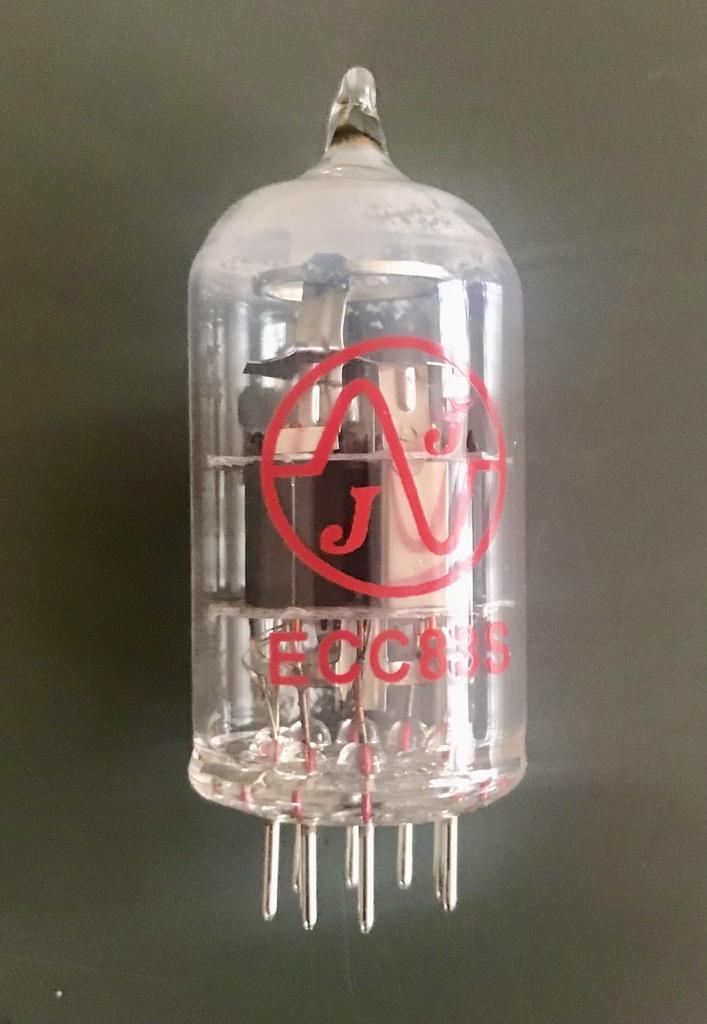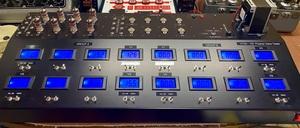It has happened or will happen to you when you’re the proud owner of a valve guitar amp or Hi-Fi amp. It worked fine yesterday and today it has gone weird. The thing is blowing fuses, making weird noises, or dead as a doornail.
We, of course, sell valves and related gear, but we don’t want you to buy valves you don’t need. When disaster strikes, there are things you can do to diagnose if you have faulty valves. This requires no technical knowledge whatsoever.
And remember, valves failures are the most common source of problems in valve amps.
A word of caution
Before we start, it is worth warning you to take EXTREME CARE if you have to take your amp’s back panel off. There are LETHAL voltages inside your amp, even when it’s not plugged in, that can injure or kill you. So be warned!!!
And with that out of the way, here’s a list of things you can do.
1. Mains fuse keeps blowing
If the mains fuse is blowing, then don’t proceed, get the amp to a good tech. There are often other fuses inside the amp, so even if you replace the fuse and the amp now “lights up,” internal fuses have disconnected the high voltage to the valves. Your amp needs professional attention.
2. One or more valves not lighting up
There is a heater inside a valve, and this can fail just like a light bulb. Try swapping the valve that isn’t lighting up into another position. If it still doesn’t light up, the valve needs replacing. If it does, then the amp needs to go to a tech.
3. Amp keeps blowing fuses
When your amp has blown a fuse, my rule is to replace it with a fuse of the same rating and see if the amp comes back to life. Sometimes fuses themselves fail or there was a glitch on the mains and this caused the fuse failure. If it blows again, do not replace it as there is a fault.
Amps with valve rectifiers often blow fuses because the rectifier valve is going short circuit. Part numbers for rectifiers in your amp are, for example, 5AR4, GZ34, 5U4, EZ81. Pull out the rectifier and replace the fuse. If it blows again, take your amp to a qualified tech. If the fuse no longer blows, then possibly the rectifier has failed. I have seen this in Vox AC30s.
Keep in mind that some amps have other fuses on the printed circuit board, so check those too.
4. Output valves glowing orange or red — really glowing!
It’s normal for the heater, which is in the centre of the valve, to glow. But if the plates you can see inside the glass are glowing, switch off now!! Faulty valves often do this, in which case new valves will get you rocking again. However, incorrect bias can also be the culprit. In some amps, the electrolytic capacitors in the bias circuit can have a partial short circuit and this causes the output valves to pull catastrophic current. Never run an amp like this, as it wrecks the output transformer.
5. Valve is white inside
If the valve is white inside, then it has a gas leak and needs to be replaced. The protective silver material in the valve oxidises on contact with air. Replace it, and you’re ready to rock.
6. Amp sounds dull
This means your valves are wearing out. Usually the amp has no punch anymore and sounds flabby. It’s time to buy some new valves from us! Replace the output valves first as they wear out the fastest. They carry the highest power in the amp and wear out about twice as fast as preamp valves.
7. Amp makes wisping noises or crackles
Insulation is breaking down in the valves because of age and wear. The wisps and crackles are intermittent, short circuiting inside the valves. Output valves are the usual culprits. If it is the output valves, you can end up with blown fuses or even a damaged output transformer, so don’t wait on replacing them if you’re hearing these noises from your amp.
More modern amps have fuses to protect the output transformer. But if you keep running the amp with crackling, faulty valves, it will eventually fail. You then get collateral damage such as screen resistors blown, output transformer failure, printed board tracks burned off. We’re talking big trouble.
It’s far cheaper to replace bad valves than risk this kind of damage.
8. Amp howls or rings when playing notes
This happens when a valve has gone microphonic. With all the vibrations in the cabinet caused by the music, the electrodes inside the valve can work loose. And when they do, the valve becomes a microphone. Most often you’ll see this with preamp valves.
You can check them by getting a plastic pen and tapping each valve in turn with the amp turned on and connected to a speaker (or your cab, etc.). You’ll hear the microphone effect when you tap one. And it’ll be really obvious.
All valves are slightly microphonic when new but get worse as they age. And once they reach the point where they’re making howling and ringing noises, tapping them produces a loud thwack from your speakers. That “howling” is exactly the same as a microphone in a PA system getting acoustic feedback.
Sometimes, output valves can become microphonic too. But it’s usually the preamp valves. The valves nearest the inputs are the most sensitive. Further along the amplification chain, the amp is less sensitive to microphonics. You can try swapping the positions of 12AX7’s to minimise the effect. Just make sure you swap types that are like for like. I’ve seen signal capacitors become microphonic too.
9. Noisy reverb
Amps such as Dr Z, Mesa Boogie, Fender, and many more use a valve circuit to drive the reverb pan. Usually, the valve is an ECC81 (12AT7). It has the toughest job of the preamp valves in the amp. A poor 12AT7 will wear out faster than the other preamp valves, as it’s overworked and underpaid. And the 12AT7 often complains by going noisy. And when it does, your reverb will sound like thunder in the distance. No good. Just retire that 12AT7 and pop a new one in its place.
Finally….
This is by no means a comprehensive list, but hopefully this reveals some of the common valve-related issues, and can help you identify faulty valves in your amp without spending money on an amp tech. I will add to this article if more simple diagnostic ideas come to mind. If you have some good ideas to add, please let me know. We have a great range of valves at reasonable prices in our shop. So check them out!


